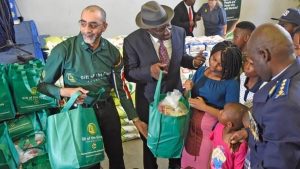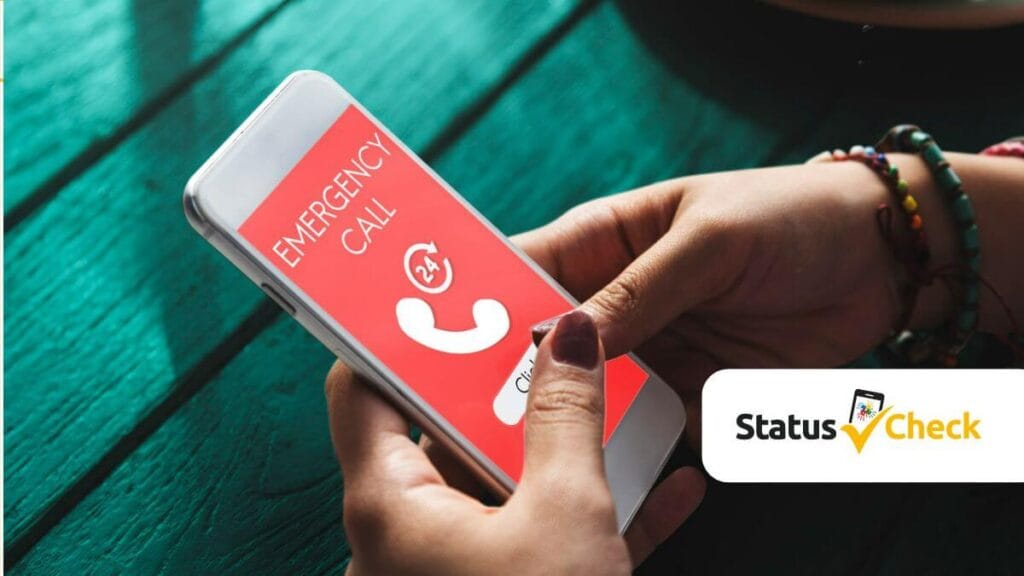The South African government is proposing a major overhaul of its emergency response system, aiming to streamline various emergency hotlines into a single, unified number—112. This plan, submitted by the Department of Communications and Digital Technologies to the Independent Communication Authority of South Africa (Icasa), involves phasing out familiar numbers such as 10111 (police), 10177 (medical emergencies), and 107 (fire, rescue, ambulance services).
Let’s dive into the details of this proposal, explore its implications, and examine how it could impact emergency services and the public at large.
The Push for a Single Emergency Number
The proposal aims to simplify South Africa’s emergency response system, making it more efficient and user-friendly. Currently, individuals in distress must identify and dial specific numbers depending on the nature of their emergency—a potentially confusing task in high-stress situations.
The Department of Communications and Digital Technologies argues that consolidating these numbers into a single hotline—112—will eliminate confusion, improve response times, and align with global best practices.
The Legal Framework
The proposal is grounded in the Electronic Communications Act, which governs regulations related to emergency hotlines. While the Act prescribes the existence of multiple numbers (10111, 10177, 107), the department believes that moving to a unified system is the way forward.
However, the Act also mandates the establishment of dedicated 112 emergency centers before the number can become exclusive. The department has requested Icasa amend this requirement, allowing the transition to commence without the need for new infrastructure.
Current Challenges with Emergency Hotlines
South Africa’s emergency hotlines have long been plagued by inefficiencies. The SAPS’ 10111 hotline, in particular, has struggled to meet demand, with millions of calls going unanswered each year.
Staffing Shortages
A report to Parliament revealed that SAPS call centers are severely understaffed, with only 41.31% of positions filled on average. This chronic understaffing has contributed to widespread call abandonment.
Between 2018 and 2019, an estimated 14.9 million calls to 10111 were abandoned across 11 of the country’s 19 call centers. These abandoned calls include those where:
- An agent didn’t answer.
- The caller hung up before being connected.
- The call was dropped due to technical issues.
Technical Failures
Outdated and malfunctioning systems further exacerbate the problem. Several call centers lack operational telephone management systems to track calls, meaning the extent of missed connections may be even greater than reported.
Potential Benefits of a Unified Number
Consolidating all emergency services under the 112 hotline could significantly enhance South Africa’s response capabilities.
1. Simplicity for Citizens
A single, easy-to-remember number ensures clarity during emergencies, reducing hesitation and confusion for people in distress.
2. Efficient Resource Allocation
With all calls routed through one centralized system, resources can be distributed more effectively, ensuring that emergencies are prioritized and handled swiftly.
3. Faster Response Times
By removing the need for multiple hotlines, emergency services can focus on reducing call-handling times and improving dispatch efficiency.
Concerns and Challenges
Despite its potential benefits, the proposal to streamline emergency numbers isn’t without its drawbacks.
Implementation Costs
Transitioning to a single hotline will require significant investment in infrastructure, staff training, and public education campaigns to ensure the public is aware of the changes.
Job Security
Centralizing operations could lead to job losses for workers currently employed at decentralized call centers.
Accessibility in Rural Areas
Ensuring that the 112 system is accessible nationwide, particularly in remote and underserved regions, will be critical.
How the 112 System Will Work
The 112 hotline is already partially operational, with calls routed through private communication centers managed by network service providers. These centers often rely on Automatic Voice Response (AVR) systems to direct calls to the appropriate emergency service.
If Icasa approves the proposed regulatory changes, these systems will be expanded and formalized to accommodate all emergency calls.
Public Participation: A Chance to Weigh In
The government has opened a 30-day public comment period on this proposal. This is a critical opportunity for South Africans to voice their concerns, ask questions, and share feedback.
Phasing out 10111, 10177, and 107 in favor of a single emergency number—112—represents a bold step toward improving emergency response in South Africa. While the transition poses challenges, the potential benefits of a unified, streamlined system are compelling.
The success of this initiative will depend on careful planning, adequate investment, and strong public engagement. By working together, South Africans can ensure that the new system is robust, inclusive, and effective.
Related: Top 10 Tips to Stay Safe When Collecting Your SASSA Social Grant in South Africa










